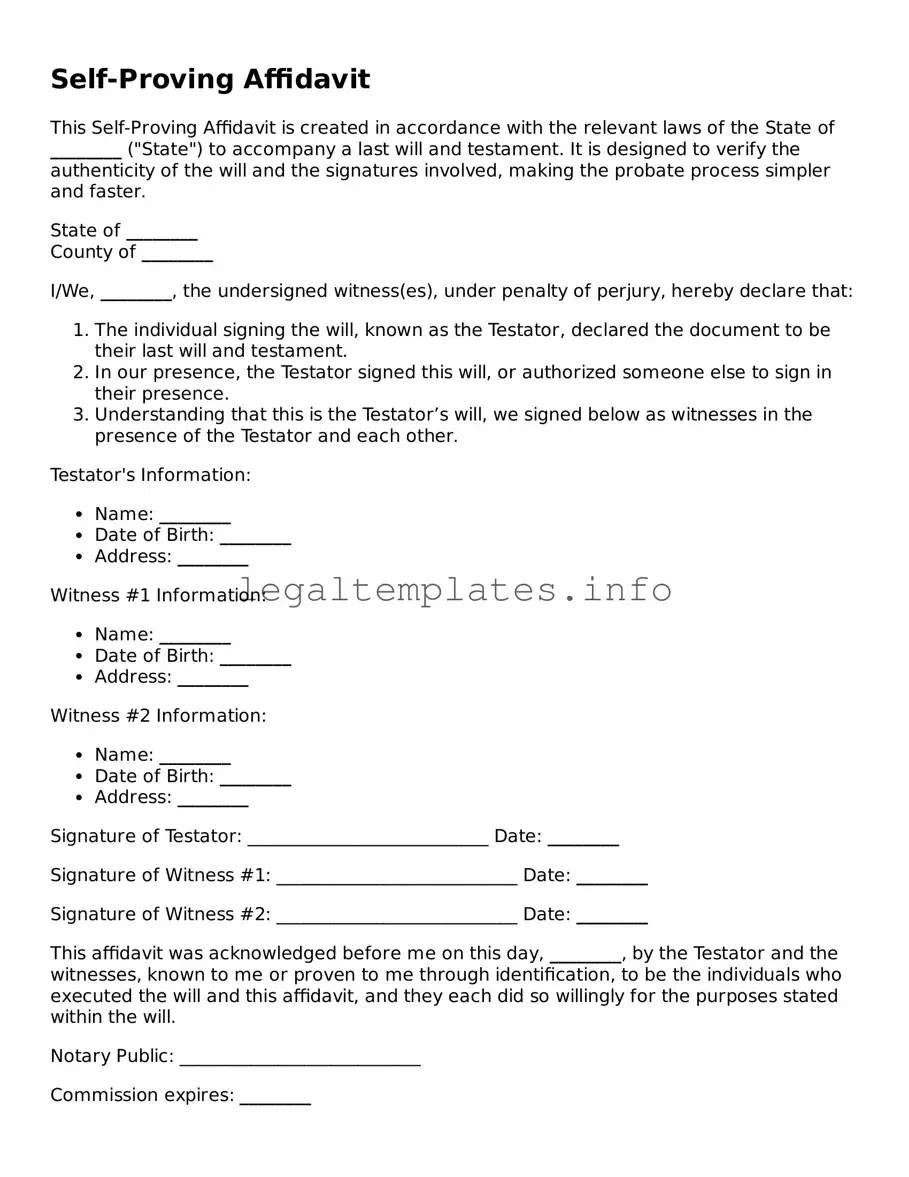What is a Self-Proving Affidavit form?
A Self-Proving Affidavit form is a document that accompanies a will, where the witnesses and the person making the will (testator) swear in front of a notary public that the will has been signed and executed under the requirements of the law. This affidavit helps to simplify the probate process as it serves as evidence that the will was properly executed.
Why is a Self-Proving Affidavit important?
It is important because it helps to avoid potential complications during the probate process. With this affidavit, there's no need for witnesses to be present in court to validate the will, making the process faster and reducing the likelihood of legal challenges to the validity of the will.
How do I create a Self-Proving Affidavit?
To create a Self-Proving Affidavit, both witnesses and the testator must appear before a notary public and sign the affidavit, confirming that the associated will was signed and acknowledged by them. The affidavit must be attached to the will to be effective.
Can a Self-Proving Affidavit be added to an existing will?
Yes, a Self-Proving Affidavit can be added to an existing will. However, the same process of having the witnesses and the testator acknowledge the will in front of a notary public must be followed, even if the will was signed at an earlier date.
Is there a specific form for a Self-Proving Affidavit?
While the requirements can vary from one jurisdiction to another, most require a standard form that includes statements by the witnesses and the testator, sworn in front of a notary public. It's essential to use the correct form for your specific state to ensure its legality.
What happens if a will does not have a Self-Proving Affidavit?
If a will does not have a Self-Proving Affidavit, it does not mean the will is invalid. However, it might require witnesses to testify in court about the authenticity of the will, which can prolong the probate process and potentially complicate matters if witnesses are unavailable or their memories of the signing are unclear.
Can a Self-Proving Affidavit be contested?
While a Self-Proving Affidavit generally strengthens a will's validity, it can be contested. Challenges may arise if there is suspicion of fraud, if the testator was not in a sound state of mind at the time of signing, or if there were issues with the execution process. Legal advice should be sought if there's any concern regarding contesting a will or affidavit.
Is a notary public always required for a Self-Proving Affidavit?
Yes, a notary public is required to make a Self-Proving Affidavit legally binding. The notary's role is to verify the identity of the signers and ensure that they are signing under their own free will, making the affidavit a credible document that supports the will's validity.
